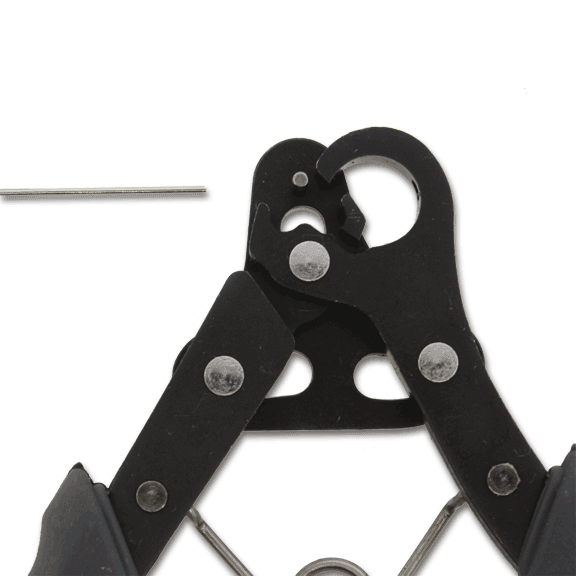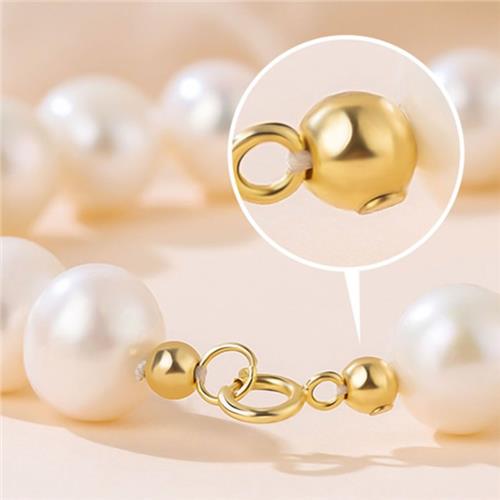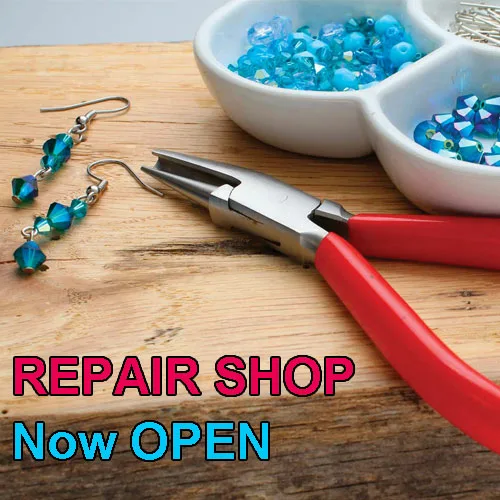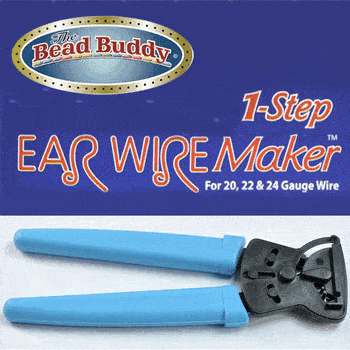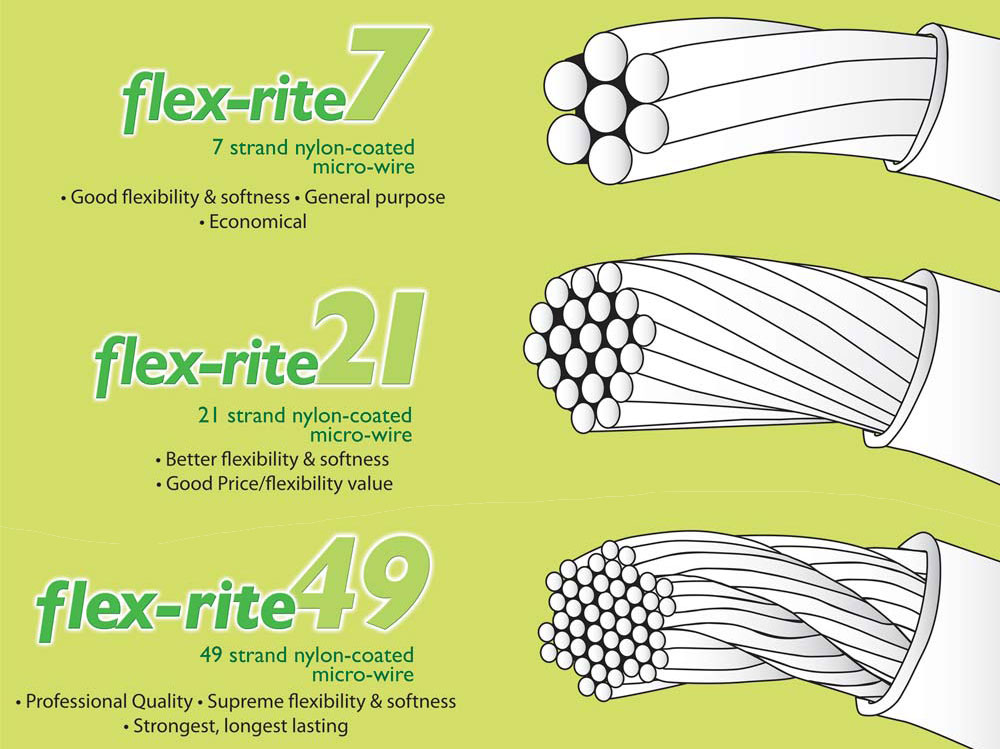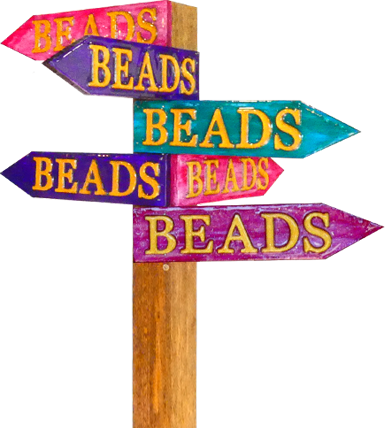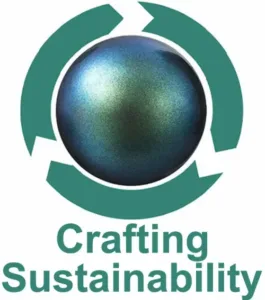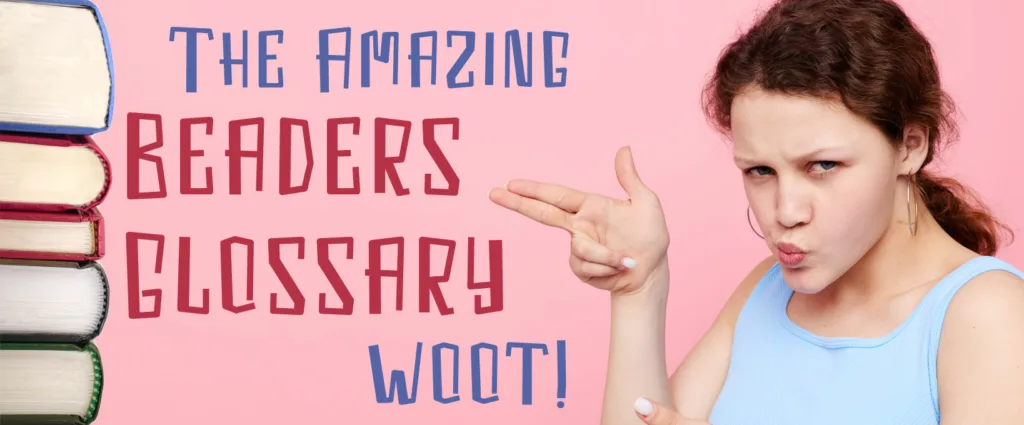
Hey there, bead buddies! Welcome to our Beading and Jewellery Making Glossary – your cool sidekick in this beading bonanza! Get ready to jump into the awesome world of beads, gemstones, tools, and techniques. Whether you’re a seasoned bead ninja or a total newbie explorer, this glossary is your guide through the crazy and awesome language of bead magic. It’s like a treasure map but for all the weird and wonderful bead terms! From figuring out the lowdown on bead types to unlocking the secrets of wirework and findings, our glossary is here to be your bead BFF. So, let’s kick off this beading party, and make sure your beading adventures are both groovy and enlightening!
101 Most Important Beading Terms You Must Know
925: Sterling Silver. The metal is composed of 92.5% pure silver and 7.5% alloy, usually copper.
935: A metal consisting 93.5% pure silver. An example would be Argentium which exhibits a higher tarnish resistance compared to 925.
Anti-Tarnish: Materials designed to prevent or reduce tarnishing, commonly jewellery findings and components.
Aurora Borealis (AB): Aurora Borealis, often abbreviated as AB, refers to a vibrant iridescent finish applied to crystals or glass beads. This finish mimics the colours of the Northern Lights, displaying a captivating range of hues, including greens, blues, pinks, and purples. The Aurora Borealis coating enhances the visual appeal of jewellery, adding a mesmerising and ethereal quality to the crystals. AB2x refers to a crystal will a full coat of AB, whereas AB on it’s own typically indicates an effect applied to a portion of the crystal.
Bail: A finding used to attach pendants or charms to necklaces, often shaped like a loop or hook. Varieties generally include pinch bails and glue on bails.
Ball Pins: Headpins with a small, rounded end, preventing beads from sliding off.
Barrel Clasp: Often called a screw clasp, a clasp shaped like a barrel, with two parts that screw together to secure the jewellery.
Beading Needle: Thin needles specially designed for threading beads and working on intricate beadwork.
Bead Board: A flat surface with channels or compartments for organising beads and planning designs.
Bead Mat: A soft surface used for organising and preventing beads from rolling away during the beading process.
Bead Stopper: A small, spring-loaded clamp used to secure beads on a strand, preventing them from sliding off during the beading process.
Beadalon: A brand of flexible bead stringing wire commonly used in jewellery making. We stock the alternative brand called Flex-Rite.
Beader’s Dozen: Unlike a Baker’s Dozen which is 1 more than a typical dozen at thirteen, the Beader’s Dozen is one less, at eleven pieces. Is that because you kept one for yourself or because odd numbers are more aesthetic, and they say 13 is an unlucky number?
Beading Foundation: A base material, often fabric or stiffened felt, used for bead embroidery.
Beeswax: A natural wax used to condition beading thread, reducing friction, and preventing tangling.
Bezel Setting: A finding designed to securely hold a cabochon or stone within with glue, friction or claws.
Bicone Beads: Cone-shaped crystal beads with multiple facets for added sparkle.
Big Eye Needle: A needle with a large, open eye running from one end of the needle to the other, making it easier to thread beads, especially for individuals with limited dexterity.
Brick Stitch: A bead weaving technique where beads are stacked like bricks in a staggered pattern.
Bugle Beads: Elongated tube-shaped beads often used for creating fringe or adding length to jewellery designs.
Cabochon: A smooth, rounded, and polished bead or stone with a flat back, suitable for settings in beaded jewellery.
Cabochon Setting: Creating a beaded bezel to hold and showcase a cabochon or flat-backed stone.
Cadmium-Free: Materials that do not contain cadmium, promoting the safety of jewellery components.
Calliper: A measuring tool used to gauge the dimensions of beads, wire, and other jewellery-making components.
Chain Nose Pliers: Pliers with flat, tapered jaws, suitable for gripping, bending, and manipulating wire in jewellery making.
Collapsible Eye Needle: A flexible needle made of wire with an eye that can collapse, allowing it to pass through smaller beads and then expand for threading.
Crackle Beads: Beads with a crackled or shattered appearance, often created by applying heat or a special coating.
Crimp Bead: Small metal bead used to secure the ends of beading wire and create a finished look in jewellery.
Crimp Cover: A small, decorative metal cover used to conceal a crimp bead, giving a polished appearance to finished jewellery.
Crimp Tool or Crimping Pliers: Pliers specifically designed for securing crimp beads, providing a neat and secure finish to beaded projects.
Crimp Tube: A cylindrical metal bead used to secure the ends of beading wire, ensuring a neat and secure finish.
Cure (Relating to Glue): The process of allowing adhesive or glue to set and reach its maximum strength, often involving a specific drying or curing time.
Czech Beads: Beads manufactured in the Czech Republic, known for their high quality and wide range of styles and shapes.
Daisy Chain: A beading technique where small groups of beads are linked together, resembling a chain of daisies.
Delica Beads: Cylindrical, precision-cut seed beads known for their uniform size and shape.
Druk Beads: A type of pressed glass bead known for its smooth, rounded shape and uniform appearance.
Dyed: Gemstones or pearls that have undergone a colour enhancement process through the application of dyes to achieve a desired hue. This process is often used to improve or change the colour of less valuable stones.
Earring Backs: Small findings used to secure earrings in place, available in various styles like butterfly backs and bullet backs.
Earring Findings: Components like ear wires, studs, and hoops used to create earrings.
Elastic Cord: Stretchy cord often used for making stretch bracelets, providing flexibility and ease of wear.
End Cap: A decorative finding used to cover and finish the ends of beaded strands, providing a professional look.
Eye pin: A straight pin with a loop at one end, used for creating dangles or links in jewellery.
Filigree: Delicate, ornamental metalwork often used as components in jewellery designs.
Finding: General term for various components used in jewellery making, such as clasps, jump rings, and ear wires.
Fire Polished Beads: Glass beads that are machine faceted and then polished to achieve a smooth, shiny finish.
Flat Nose Pliers: Pliers with flat jaws, used for gripping, bending, and shaping wire in jewellery making.
Flat Spiral Stitch: A bead weaving technique that creates a flat, spiral pattern.
Flush Cutters: Precision cutting tools designed to create a flat or flush cut on wire, ensuring a clean and smooth finish.
Fringe: Strands of beads or threads attached to the edge of a beaded piece for decorative purposes.
German Style Wire: High-quality jewellery wire known for its strength and resistance to tarnishing, suitable for various wire working techniques.
Gimp/French Wire: A coiled wire used to protect and beautify the ends of stringing material, often seen in traditional knotted freshwater pearl jewellery with clasps.
Gold Filled: Made by bonding a layer of gold, usually 5% or 1/20th of the total weight, to a base metal core, often brass or copper. This results in a more durable and longer-lasting product compared to gold-plated items.
Hank: A bundle of strands or threads of beads, often tied together, making it easier to handle and store. A ‘Full Hank” is 12 strands, whereas a “Half Hank” or “beaders Hank” is typically 6-strands.
Hatpin: A long, decorative pin used to secure a hat to the hair or head, often adorned with beads or other embellishments.
Headpin: A short piece of wire with a flat or decorative end used to create bead dangles.
Heated: Gemstones that have been subjected to heat treatment to enhance or alter their colour. Many gemstones, including sapphires and rubies, are commonly heated to improve their colour and overall appearance.
Herringbone Stitch: A bead weaving technique that creates a V-shaped pattern resembling a herringbone.
Irradiated: Gemstones that have been exposed to radiation to alter their colour or improve their clarity. This treatment can result in a variety of colour changes and is commonly applied to certain gemstones to enhance their market appeal.
Jump Ring: A small, circular metal ring used to connect various components in jewellery making.
Jump Ring Opener/Closer: A tool designed to easily open and close jump rings, making it simpler to attach components in jewellery making.
Knotting Tweezers: Tweezers with a fine tip, used for precision knotting in techniques like pearl knotting.

Lampwork Beads: Handmade glass beads created by melting glass rods using a flame torch.
Lapidary: The art of cutting, shaping, and polishing gemstones, crystals, and minerals.
Lapidary Club: An organisation or group of individuals interested in the art and craft of cutting, shaping, and polishing gemstones and minerals.
Lariat: A long, versatile necklace that can be worn in various ways, often without a clasp.
Lead-Free: Materials that do not contain lead, important for ensuring the safety of jewellery components.
Leather End: A finding used for the finishing or termination of a leather strap, strand or belt.
Lobster Clasp: A popular type of jewellery clasp resembling a lobster claw, known for its secure closure.
Loom Beading: A technique where beads are woven together on a loom to create intricate patterns and designs.
Mandrel: A cylindrical tool used for shaping and sizing beads, especially in metalworking or lampworking.
Matte Finish: Beads with a non-glossy, frosted appearance.
Matubo Beads: High-quality Czech glass beads with a unique shape and larger hole, suitable for various beadwork projects.
Memory Wire: Coiled wire used for making bracelets that retain their circular shape.
Memory Wire Shears or Cutters: Specialised hardened steel cutters designed for cutting memory wire, a coiled wire used in bracelet making.
Miyuki Beads: High-quality Japanese seed beads known for their uniform size and shape, popular in intricate bead weaving projects.
Nickel-Free: Materials that do not contain nickel, suitable for individuals with nickel allergies.
Nymo Thread: A strong, nylon beading thread commonly used in various beadwork projects.
Parrot Clasp: A type of jewellery clasp shaped like a parrot’s beak, with a spring-loaded mechanism for secure closure.
Patina: A surface layer that develops on metals over time, often intentionally induced for an aged or antique appearance.
Peyote Stitch: A popular bead weaving technique involving a staggered, diagonal pattern of beads.
Picot Edge: Small loops created on the edge of beadwork, often for decorative or functional purposes.
PP Sizing: Abbreviation for “Pearl Plate Sizing,” a measurement system used for pearl sizing where each plate corresponds to a specific size range
Preciosa Crystals: Crystals produced by Preciosa in the Czech Republic, known for their quality and sparkle, commonly used in jewellery and fashion accessories.
Pressed: Gemstone beads that are created by pressing small fragments or powder of the gemstone material into a desired shape using high pressure. This process is often used for softer gemstones or those that are more challenging to cut into traditional bead shapes.
Pressed Glass: Glass beads created by pressing molten glass into moulds, resulting in uniform shapes and sizes.
Reamer: A tool used for enlarging or smoothing bead holes, typically made of steel or diamond-coated.
Rivoli: A faceted, round crystal stone often used as a focal point in beaded designs. A Rivoli will often have no drill or threading holes.
Rocaille Beads: Small, round seed beads with a large hole, often used in intricate beadwork.
Rosary Chain: A type of beaded chain often used in rosaries and jewellery, where beads are linked together in a continuous strand.
Round Nose Pliers: Pliers with rounded, tapering jaws, ideal for creating loops and curves in wire jewellery.
Russian Spiral Stitch: A tubular bead weaving technique that creates a spiral pattern.
Seed Beads: Small, uniformly shaped beads used in various beadwork projects.
Sculpey Clay: A brand of polymer clay used in bead making, sculpting, and various crafts. It comes in different colours and can be baked to harden.
Side Cutters: Pliers with cutting edges on the side, used for cutting wire and headpins close to the surface of a project.
Slide Clasp: A clasp consisting of two parts that slide into each other, creating a seamless look when closed.
Soutache: A flat decorative braid often used as a base for bead embroidery.
Spacer Bars: Connectors with multiple holes used to create multi-strand beaded designs.
Spacer Beads: Small beads used to separate and add space between larger beads in a design.
Split Ring: A small, double-looped metal ring used as a secure connector in jewellery making. Large split rings are used to secure keys.
SS Sizing: “Stone Size” is a system used to denote the size of rhinestones, chatons, or crystals. The number that follows “SS” corresponds to a specific size range.
Stabilised: Gemstones that have undergone a stabilisation process to enhance their durability and prevent colour changes over time. This treatment is common for gemstones that are prone to fading or discolouration when exposed to light, heat, or other environmental factors.
Sticky Bead Mat: A mat with a slightly sticky surface, preventing beads from rolling around and making it easier to pick them up with a needle or beading tool.
Surgical Stainless Steel: A type of steel that is highly resistant to corrosion and staining, suitable for hypoallergenic jewellery.
Swarovski Crystals: High-quality precision-cut crystals made by Swarovski of Austria, renowned for their brilliance and clarity, often used as accents in jewellery.
Table Cut Beads: Beads with a flat table surface created by cutting or faceting, often used for a more reflective and elegant look.
Tarnish Resistant: Materials treated or coated to resist tarnishing, maintaining their appearance over time.
Tassel: A bunch of threads or cords, often capped with a decorative finding, used to add flair to jewellery or accessories.
‘That’ kind of bead shop: A bead shop with an extremely limited range of products, low quality materials, loose overpriced beads, a dodgy website, outdated products, ambiguous pricing, a boring unappealing layout, uninspired staff, and poor parking. Basically, the complete opposite of Beads N Crystals, who are literally the definition of “not ‘that’ kind of bead shop”!
Thread Burner: A tool, such as the Thread Zap, used to trim and melt the ends of beading thread to prevent fraying.
Thread Conditioner: A substance, often wax or conditioner, applied to beading thread to reduce friction and prevent tangling.
Tigertail: A type of bead stringing wire that is strong, flexible, and coated for durability.
Toggle Clasp: A type of jewellery clasp consisting of a bar that is inserted into a ring to fasten the jewellery.
Vermeil: A specific type of gold plating where a layer of gold of significant thickness, is applied over sterling silver. To be considered vermeil, the gold layer must be at least 2.5 microns thick.
Wire Gauge: A measurement system used to indicate the thickness of wire. In beading, wire gauge is crucial for selecting the right wire for specific projects.
Wire Guardians: Small, horseshoe-shaped findings used to protect beading wire from abrasion and wear.
Wire Rounder: A tool used to smooth the cut ends of wire, preventing sharp edges in jewellery projects.
Wire Wrapping: A technique where wire is used to secure and embellish beads, creating unique and customisable jewellery designs.




